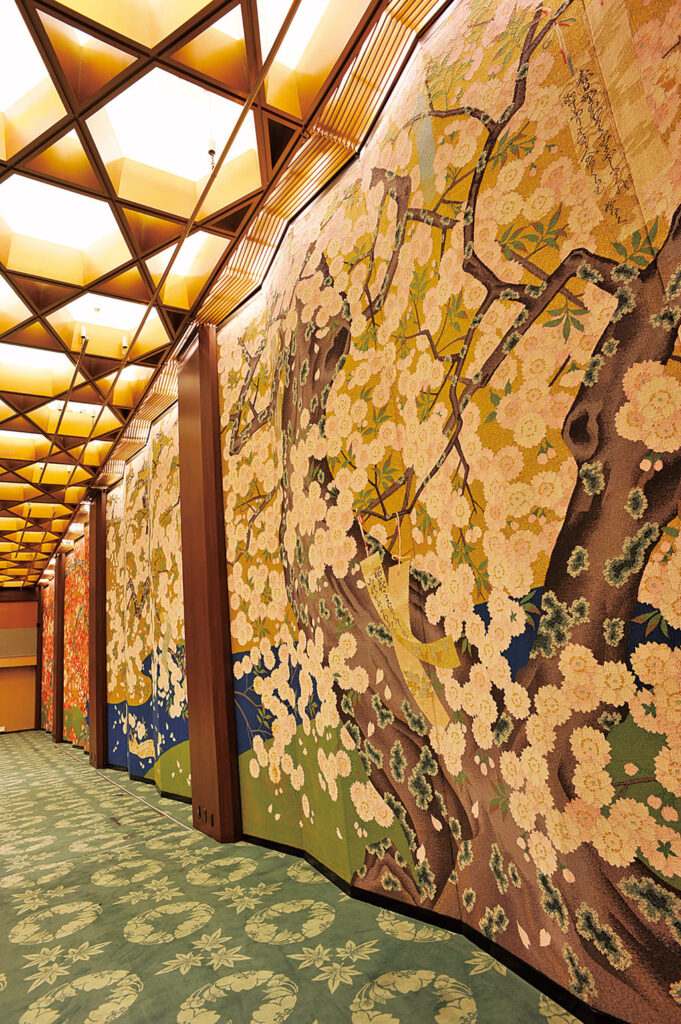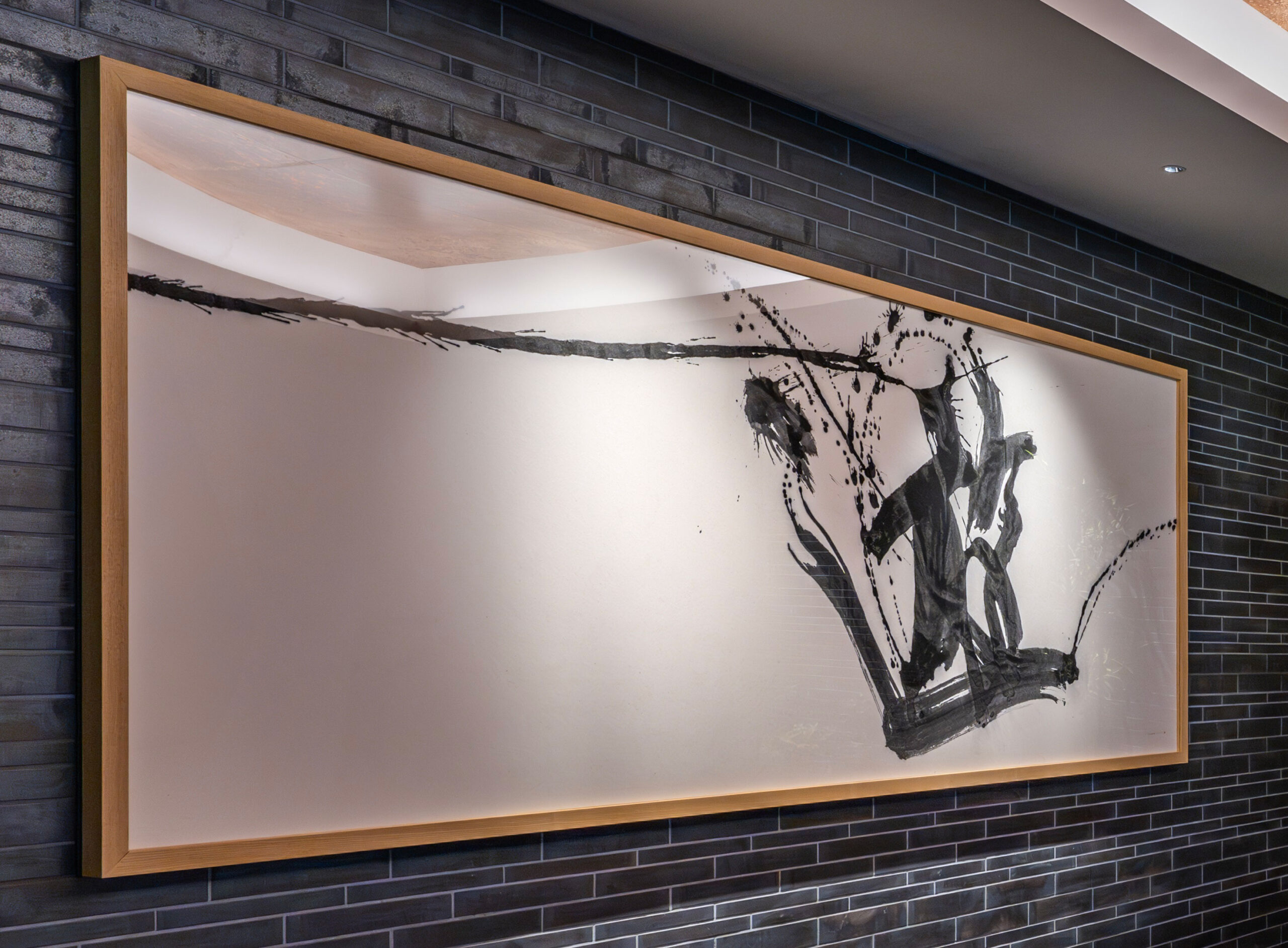
Cherry Blossoms and Autumn Leaves; The Boundary Creates Seasons and Scenes.
This article was originally published in the April/May 2010 issue of The ROYAL.
The ROYAL SIGN
-Treasure Hunting at RIHGA Royal Hotel Osaka-

It is said that Japanese folding screen paintings were especially popular among foreign aristocrats during the medieval and early modern periods. Therefore, it is not unusual for Japanese folding screen paintings, which are still popular as both art and valuable historical objects, to be found overseas in castles and other locations. In most cases, however, they are not used as originally intended. They are sometimes embedded in walls as decorative art, for example.
Nishijin-ori tapestry that decorates the walls of the “Sanraku,” one of the Grand Ballrooms, reminded me of the fact.
This Nishijin-ori tapestry is a recreation of “Yoshino Tatsuta Zu,” one of the most famous folding screen paintings by Kano Sanraku, a brilliant artist of the Momoyama period. The room is about 793㎡, so if you see it from the edge of the room, the wall itself looks like a painting, but when you get closer, you can see that it is a tapestry that is folded and spread out like a folding screen.
The photo above shows the cherry blossom in the front and the autumn leaves in the back. The “Sanraku” can be used as two rooms by dividing it between the two. The boundary creates a different atmosphere, and you can enjoy the elegance and practical beauty of the Japanese folding screen paintings.
Text by Ko Hiroki
Photography by Harry Nakanishi









